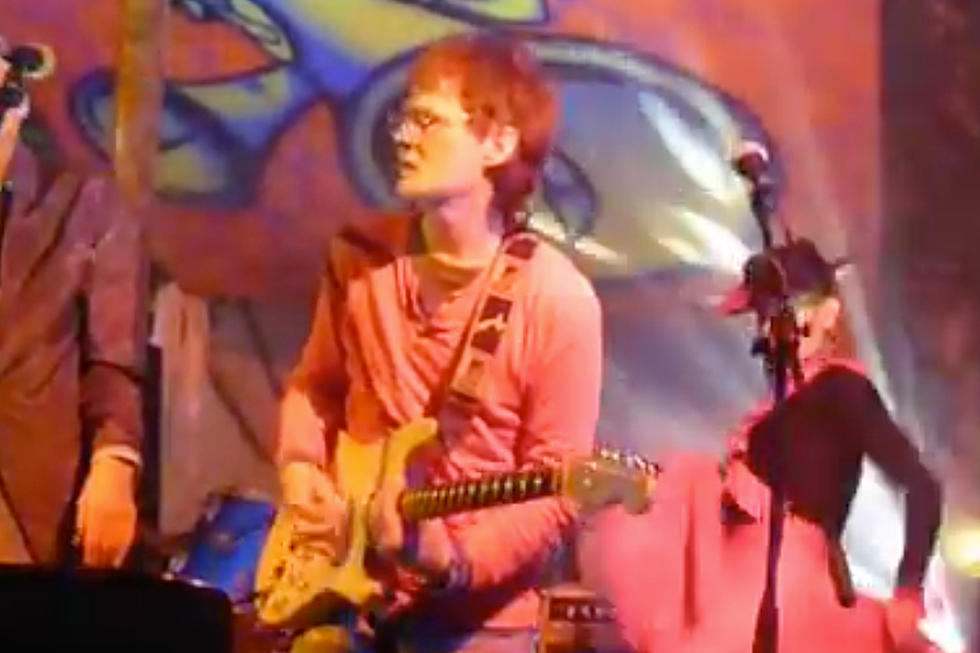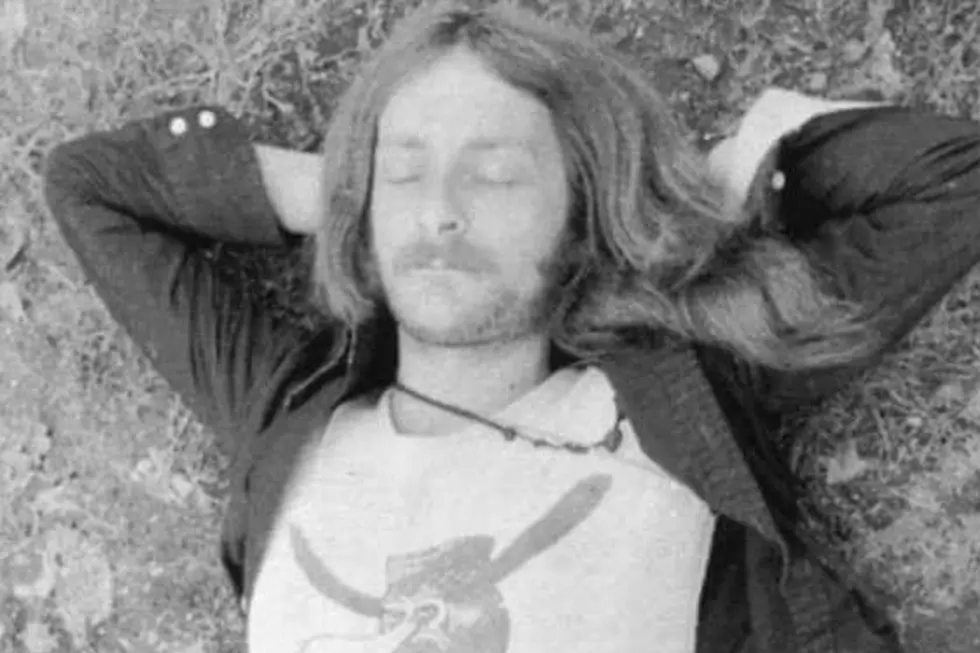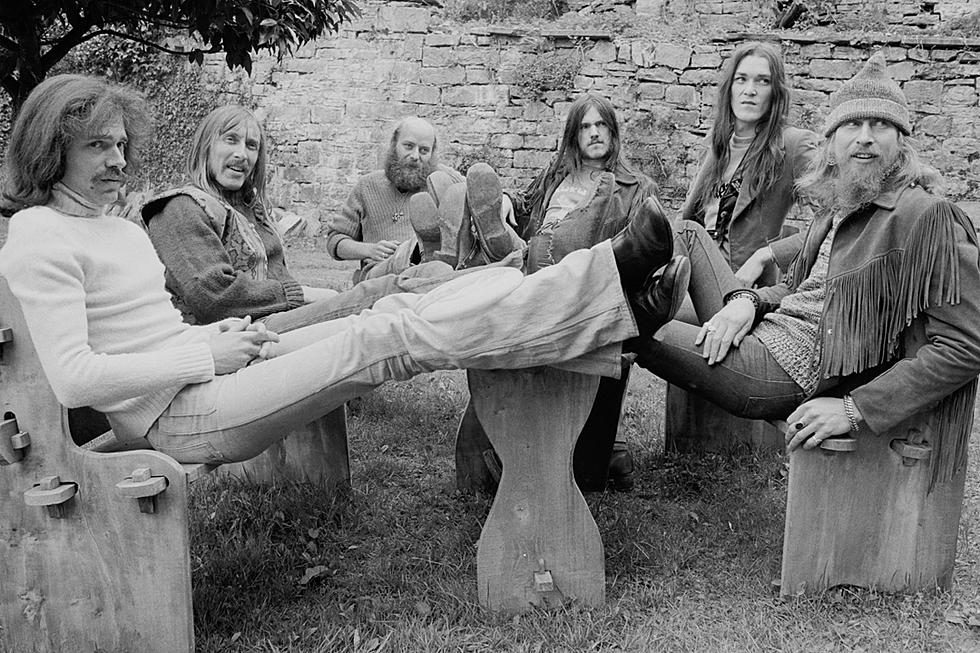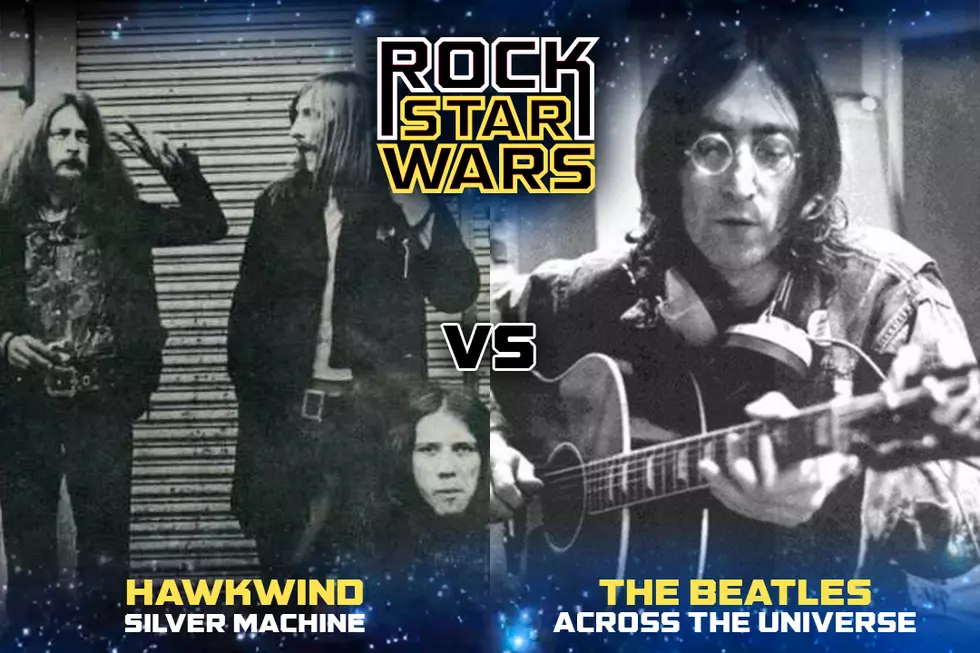
How Hawkwind’s Debut Took the Band on Their First Trip to Space
In their heyday, Hawkwind were a band unlike any other. They took the psychedelic agenda and pushed it into outer space, starting with their self-titled debut, which arrived in August 1970.
With albums like In Search of Space, Doremi Fasol Latido, and the live LP Space Ritual, they would often twist simple songs into other worldly adventures. Their destination into the galaxies, however, began on much more solid terrain.
Guitarist Dave Brock often found himself busking on England's street corners in the late '60s, performing folk songs to passers-by. Eventually, he would team up with the cosmic force known as Nik Turner. In 1969 Brock and Turner had formed a full-blown electric ensemble with no name. Originally just calling themselves Group X, by years end, Turner christened the band Hawkwind Zoo. After a short stint winning over fellow freaks, they attracted the attention of United Artists Records, who would sign the band to a multi-album deal.
Produced by Pretty Things guitarist Dick Taylor, Hawkwind captures the new band as they are still taking shape. The album was recorded live in the studio after a few attempts at a more involved recording procedure failed. Joining Brock and saxophonist Turner were the late guitarist Huw Lloyd Langton, bassist John Harrison, drummer Terry Ollis and Dik Mik on synthesizers.
The album begins, unassumingly, with a song brought forth from Brock's busking repertoire. "Hurry on Sundown" is a three-chord wonder, a simple folk song that, to this day, still shines uniquely bright. Following that catchy tune, all bets are off as the band heads for planets unknown. "The Reason Is?" is an atmospheric instrumental that eventually merges with the repetitive riffing of "Be Yourself," a very loosely structured jam that allows the band to stretch out. The track builds with intensity and purpose as it chugs along. Unlike paths taken by "jam bands," Hawkwind were always on a ride somewhere.
Listen to Hawkwind's 'Hurry On Sundown'
With "Paranoia Pt.1 & 2," things get more freaked out. Haunting voices chant "higher" as synth and guitars get caught in a wind tunnel to create a sense of paranoia. "Seeing It as You Really Are" is a slow building free-form freak-out that points the direction toward the next album with a more pronounced driving rhythm to propel the wash of electronics, sax and guitars skyward. They would perfect this type of sonic attack over the course of the next two LPs.
The album ends close to where it all began, with another, more decidedly earthbound song, "Mirror of Illusion." By book-ending the album with more straight ahead rock 'n' roll, the entire record plays out like some sort of round trip. Those two straight-forward tunes still rank among the finest in the band's catalog.
Though much of the Hawkwind lore is rooted in the continuation of the tattered hippie dream, their anything goes attitude would have an enormous influence on the punk scene a few years later.
Sex Pistols and PiL leader John Lydon recalled driving all over the country following Hawkwind in a 2013 BBC interview. “Yeah, well I guess 40 years later listening to them it all sounds a little bit disappointing, but no: Bollocks, that was tough stuff.”
Drummer Terry Ollis in a BBC documentary, said "the first album, I think, captured the spirit of the band the most." Guitarist Dave Brock concurred, telling Record Collector: "That was the great magical album. It was quite daring."
Top 100 Rock Albums of the '70s
More From Ultimate Classic Rock









